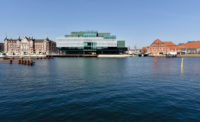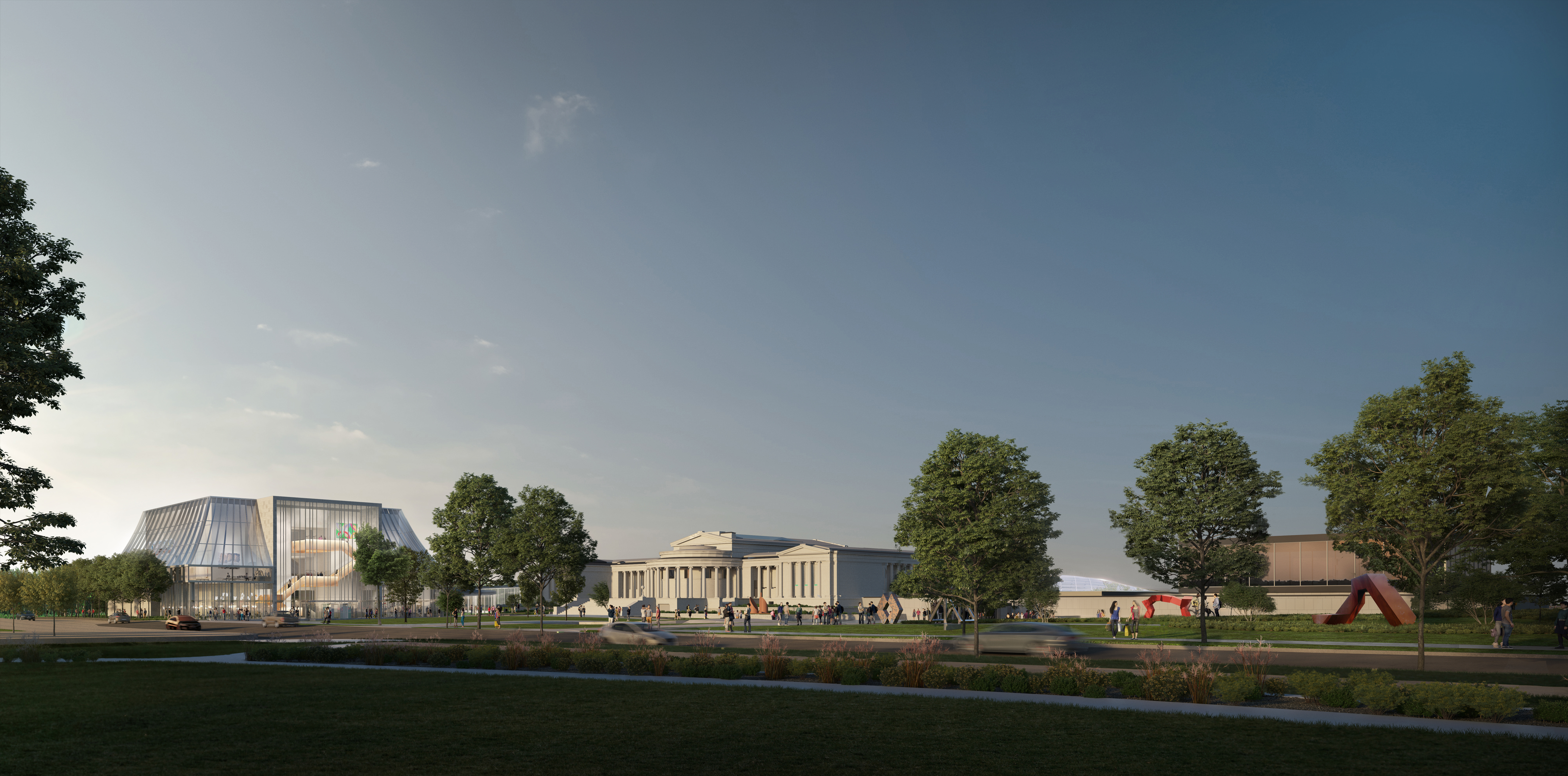Books are over,” Rem Koolhaas asserted slyly at the opening of the Bibliothèque Alexis de Tocqueville in Caen, France, on January 13. “That’s what everyone kept saying. Happily, on the contrary, books will probably exist forever.”
Additional Information:Jump to credits & specifications
As speculation over the future of books mounted with the dawn of the digital age, Koolhaas’s OMA was involved in the design of a dozen libraries—“one of the oldest typologies,” Koolhaas called it, “a pure hybrid of ancient and modern.” Many of the firm’s library designs went unrealized, including its 1989 competition entry for the Bibliothèque National de France, in Paris, where public spaces were represented as voids carved out of a solid block of information. On the other hand, the Seattle Central Library, completed by OMA in 2004, with its intensely researched organizational system and faceted form, is arguably among the best buildings anywhere in the last 20 years.
As architecture, the library in Caen, in Normandy, hardly lives up to its American sibling. As part of a larger development, it is meant to be a monumental presence where the Orne River meets the Canal de Caen. That area has been undergoing a transformation since 2010, long after port activities were abandoned. A master plan by Dutch firm MVRDV provides the framework for the waterfront regeneration, and several striking buildings have risen recently against the backdrop of the city’s traditional structures. Among them, a cubic courthouse designed by Hauvette/Baumschlager Eberle (2016) and a cupola-topped research and innovation center by Bruther Architecture, called Le Dôme (2015), sit just across from OMA’s X-shaped assembly.
The X parti, according to OMA, responds to the urban context, with each of the four protruding arms pointing to a landmark in Caen: the historic sites of the Abbaye-aux-Dames to the north and the Abbaye-aux- Hommes to the west, the central train station to the south, and the area of new construction to the east. In reality, that directional emphasis gets lost in the experience of the building as each wing culminates in small rooms rather than vast city views.
Where the geometry of the two intersecting axes does succeed is in the main space carved out of its center. A 20-foot-high second floor— sandwiched between the reception area, restaurant, and 150-seat auditorium on the ground floor, and the children’s area and offices of the top floor—is a hub of activity, of the traditional and digital variety. Here the majority of the circulating books are housed side by side with multimedia resources, within movable cases made of a translucent resin. (Of the library’s 1 million physical volumes, 90 percent are out of sight but still accessible, stored in compact shelving in the basement, which is protected from river flooding by an innovative waterproof membrane applied on the inner side of its concrete walls.)
A nearly 200-foot-long truss on the floor above allows the main central space—what OMA partner and project leader Chris van Duijn calls the “beating heart of the building”—to be vast and column-free. Floor-to-ceiling windows make it bright and expansive, but also a touch unexpected. The glazed panels are as wide as 7 feet and span the full 20-foot height without mullions, pushing the limits of glass technology. Rather than going with extremely thick glass to withstand loads, the architects opted for thinner, curved glass, giving a somewhat distorted view to the outside, like subtle fun house mirrors in reverse. The windows are actually composed of two panes of glass—the inner one flat and the outer concave. The air space between them can be as wide as 15 inches at the center of the bulge.
Above the windows, a slick perforated-metal ceiling adds to the drama of the space while concealing acoustic insulation. Throughout, long tables mingle with comfy lounge seating and large floor pillows to provide visitors extra relaxation while perusing a book. Private reading areas, bleachers, and breakout rooms occupy the ends of the four wings, each of which represents separate disciplines—social sciences, science and technology, literature, and the arts.
The 126,000-square-foot library had the unfortunate timing of opening in the dead of winter, with none of the landscaping for the surrounding park and waterfront, designed by Michel Desvigne, completed. One can only imagine how that will help mitigate the awkwardness of the triangular voids between wings when it grows in. Regardless, the X shape feels more like an early gesture that was never fully developed rather than an optimum solution for this particular site or program.
“Libraries reflect society in that moment,” van Duijn commented. The namesake for this one, the 19th-century diplomat and writer Viscount de Tocqueville, was an ardent supporter of liberty, best known for his work Democracy in America (1835). In the short time since it opened, the building that bears his name has quickly become a social condenser, uniting people of all backgrounds and education levels. “This was never thought to be just a library to house books, but a building that was truly public and did not exist in this city before,” says van Duijn.
OMA’s next library, the Qatar National Library, opens later this year in Doha.
CreditsArchitect: OMA Associate architects: Barcode Architects, Clement Blanchet Architecture
Consultants: Elioth (sustainability and facade); Robert-Jan van Santen, VS-A group (facade); Iosis, Egis Bâtiments (engineering); RHDHV (acoustics)
Client: Communauté d’agglomération Caen La Mer
Size: 126,000 square feet
Cost: $70 million
Completion date: January 2017
|
SpecificationsConcrete structure Zanello Steel frame & concave glass Gagne Facade Seralu Elevator Otis Auditorium seating Quinette Gallay Curtains Inside Outside Mobile bookshelves Tixit Furniture Vitra Metal ceiling Volutique |


















